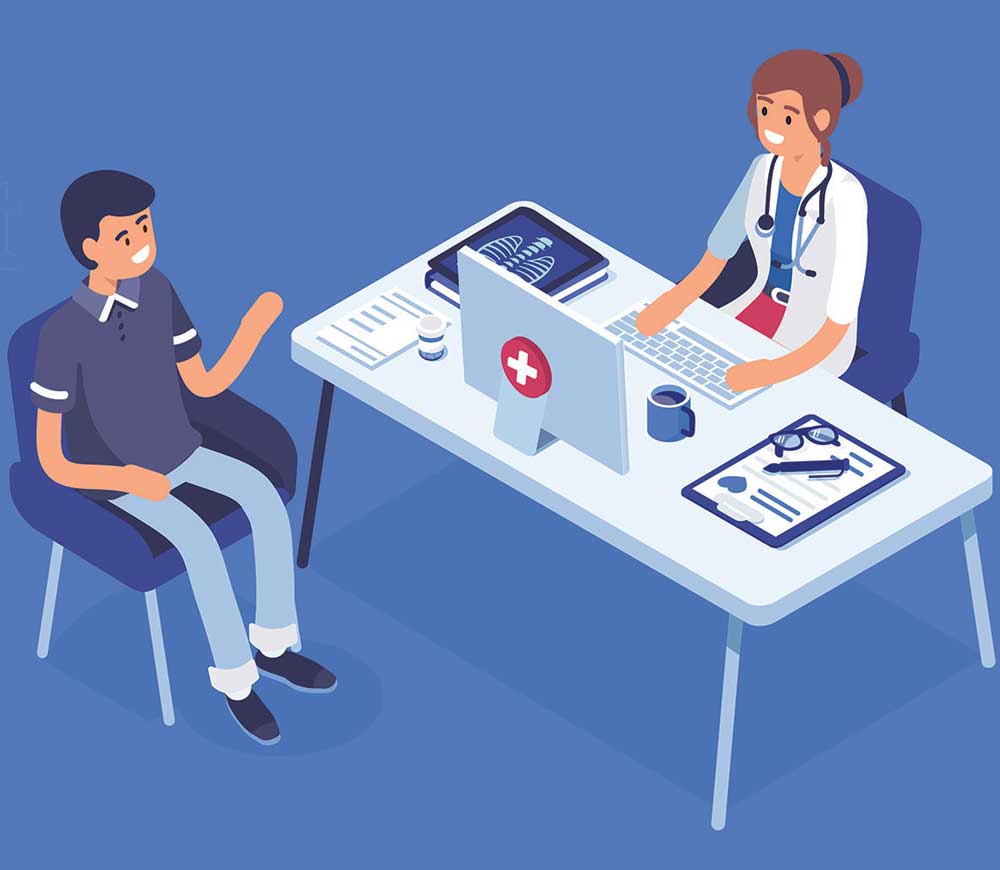
by Ann McNary, JD
Ms. McNary is a Senior Risk Manager at PRMS, Inc. in Arlington, Virginia.
Funding: No funding was provided for the preparation of this article.
Disclosures: The author is an employee of PRMS Inc., a risk management consulting company for healthcare providers.
This ongoing column is dedicated to providing information to our readers on managing legal risks associated with medical practice. We invite questions from our readers. The answers are provided by PRMS, Inc. (www.prms.com), a manager of medical professional liability insurance programs with services that include risk management consultation, education and onsite risk management audits, and other resources to healthcare providers to help improve patient outcomes and reduce professional liability risk. The answers published in this column represent those of only one risk management consulting company. Other risk management consulting companies or insurance carriers may provide different advice, and readers should take this into consideration. The information in this column does not constitute legal advice. For legal advice, contact your personal attorney. Note: The information and recommendations in this article are applicable to physicians and other healthcare professionals so “clinician” is used to indicate all treatment team members.
Innov Clin Neurosci. 2019;16(5–6):50–52
Question
I recently signed up with an online referral service but am finding that a number of the patients this service has generated are not a good fit for my practice, or worse yet, appear to be only drug-seeking. Am I obligated to treat these patients?
Question
Lately I’ve been seeing a lot of new patients who, it turns out, are looking for someone to fill out disability forms and have no desire for treatment. What are my obligations to these individuals?
Answer
Formation of the physician–patient relationship is based upon the mutual agreement of the physician and patient who enter into the relationship. Absent an exception to the general rule, no duty exists for a physician in private practice to treat or care for any particular individual unless he or she agrees to do so. However, once a physician agrees to enter into a treatment relationship, the physician becomes ethically and legally bound to fulfill all of the obligations and duties associated with that relationship until it has been terminated by either one or both of the parties.
Because of this, it is important to ensure you are establishing treatment with patients whom you believe you can help and are a good fit for your practice. This begins by managing the expectations of prospective patients, starting with their first contact with your office—be it a phone call, through a referral service site, or your own practice website. Prospective patients should be explicitly informed that the first appointment(s) is for an evaluation only, after which the two of you will determine whether a treatment relationship should be established. If this is not clearly conveyed, you could potentially be obligated to treat the patient until you are able to formally terminate the relationship. To further emphasize this point, consider having the patient acknowledge the limited extent of the first appointment when completing any initial paperwork in your office. If patients are able to access initial paperwork via your website, it should indicate that doing so does not guarantee a treatment relationship will be established. This will allow you to avoid accepting patients with whom you ultimately determine you do not wish to establish treatment. But how do you prevent those who are obviously not suited to your practice from making an appointment in the first place? Start by taking a look at your practice website and/or physician referral page and think about how the information could be interpreted by the reader. For example, if you advertise the treatment of attention deficit hyperactivity disorder, you could be attracting patients who are just seeking stimulants. Consider adding the following statements:
- “I check the state prescription monitoring program before prescribing any medication.”
- “Initial appointments are for evaluation only; medication will not be prescribed.”
Those who truly need treatment will not be put off by these statements, but drug-seekers will think twice before making an appointment. To discourage those who are looking for someone to fill out disability paperwork or otherwise assist in their legal matters and are not interested in treatment, you also could include statements such as the following:
- “I do not perform disability evaluations.”
- “I am not a forensic psychiatrist and am not able to assist with legal matters.”
Aside and apart from the traditional ways in which a treatment relationship may be established, you should be aware of ways in which you could inadvertently create a treatment relationship/duty to a patient. The word “doctor” comes from the Latin word for “teacher,” and many physicians enjoy sharing their knowledge. Unfortunately, this can sometimes result in the inadvertent establishment of a treatment relationship if the individual receiving that information considers it to be treatment advice. As noted by the American Psychiatric Association (APA) in its Commentary on Ethics in Practice, “Psychiatrists should be cautious in interactions with persons who are not (or not yet) patients to avoid rendering input, advice, or other suggestions that could potentially lead to the assumption or expectation that a treatment relationship has begun. These early conversations can occur over the phone or through other media.” 1
Furthermore, if this person relies upon this information to their detriment, he or she could be able to initiate a malpractice action, even though no treatment relationship was intended by the physician. In that instance, a judge or jury would be responsible for deciding whether the “patient’s” conclusion as to the existence of a physician–patient relationship was reasonable.
The following is a discussion of those situations in which a physician could inadvertently create a treatment relationship, as well as suggestions on how to avoid assuming a duty to a patient where none is intended.
An informal conversation in a social setting. People are often looking for ways to save time and money, and picking the brain of an expert in a casual setting is not uncommon. Physicians are often the target of such activities, and most understand the importance of not making detailed recommendations to a stranger whom they have not clinically examined. It could, however, be more tempting to offer clinical advice to friends and family members. While there is nothing wrong with providing general healthcare information to an individual in a nonclinical setting, it should be made clear to the person requesting the information that you are only speaking in general terms, and that, because every case is different, the person should be examined in a clinical setting by a qualified healthcare professional.
Prescribing for friends or family members. Most physicians have experienced situations in which a friend or family member has what appears to be a pretty routine medical problem and needs a prescription. Anytime a prescription is given, there is a presumption that a physician–patient relationship has been established. With that relationship comes all the attendant requirements, which could include such things as a written treatment record and the need for a physical examination before a prescription may be written.
Physicians should also be cognizant of their ethical restrictions regarding the medical treatment of friends and family members. Pursuant to the American Medical Association (AMA) Code of Medical Ethics, Opinion 1.2.1, physicians generally should not treat members of their immediate family. The exception to this would be in “emergency settings or isolated settings where there is no other qualified physician available” or “for short-term, minor problems.”2
Electronic communication. Particularly if you are affiliated with an academic institution, it might be easy for individuals seeking advice to gain access to your email address and write to you with treatment-related questions. Additionally, many physicians now have practice websites, some of which allow users to post questions. If someone who is not a patient poses a treatment question, depending upon the physician’s response, an argument could be made that a treatment relationship has been established. Ideally, nonpatients should not be given the opportunity to pose questions; however, if they do, specific treatment recommendations should never be given, and the questioners should be directed to seek a physician’s care.
As a side note, physicians should be aware that answering emails from nonpatients could not only inadvertently create a treatment relationship, but also could place them in a situation where they are practicing in a state in which they are not licensed if the person sending the email is located in another state.
Lectures and articles. Although this could be a more difficult connection to establish, physicians who routinely give lectures or prepare articles for nonphysicians should be careful to include disclaimers that clearly state that advice given is not intended as treatment advice and is not intended to establish a physician–patient relationship. Furthermore, they should only provide general advice in response to any queries from attendees.
Consultations. If a patient is referred to you for a formal consultation, the limited purpose of your evaluation should be made explicit. Patients should be told that you will be sending your findings to their treating physician, with whom they should follow up. Consider having patients acknowledge in writing that no treatment relationship will be established in conjunction with the evaluation.
Independent medical evaluations (IMEs)—a different type of duty. Psychiatrists or other physicians who perform IMEs do not establish treatment relationships with evaluees; however, courts are finding more and more duties owed to the evaluee. While courts seem to agree that the physician’s duty in performing an IME is not the same as the duty owed to the physician’s patients, they disagree when it comes to determining what exact duty, if any, the physician does owe the evaluee. Although there is no consistent answer to this question, the risk management advice is to assume there are four duties owed to evaluees—the duty to not injure the evaluee, the duty to maintain confidentiality, the duty to properly diagnose, and the duty to inform the evaluee of a potentially serious medical condition. As with consultations, the limited purpose of the examination should be made clear to evaluees at the outset of the interaction by explicitly stating that an ongoing relationship is not being established, but rather a limited relationship with limited duties and responsibilities.
Conclusion
Take the time to understand and manage the expectations of your prospective patients. By doing so, you will not only limit liability exposure but will also ensure that you are expending your energies on those you truly wish to treat.
References
- APA Commentary on Ethics in Practice, 3.1: The ethical and professional basis of the physician-patient relationships, American Psychiatric Association (2015)
- American Medical Association. AMA Code of Ethics 1.2.1 Treating Self or Family. https://www.ama-assn.org/delivering-care/ethics/treating-self-or-family.




